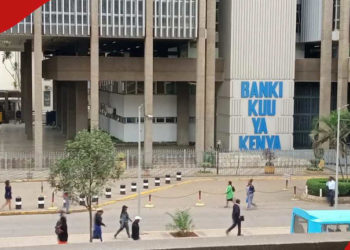The balance between inflation and unemployment hangs on a thin line, presenting one of the classic challenges in economics. The trade off between inflation and unemployment is explained by a Phillip’s curve developed in the late 1950s, which explains the inverse relationship between inflation with unemployment level. A higher unemployment level is as a result of lower inflation and vice versa. This trade off underscores the need for maintaining the right balance in order to protect the economy from the severity of the macroeconomic aspects.
Balancing inflation and unemployment in Kenya are a delicate task, as they are influenced by both internal economic factors and external global trends. As of March 2025, Kenya’s inflation rate stood at 3.6%, slightly higher than the 3.5% recorded in February, but still comfortably within the Central Bank of Kenya’s (CBK) target range of 2.5% to 7.5% (KNBS, 2025). On the employment front, the unemployment rate decreased by 0.2% to 5.4% in 2024, from 5.6% in 2023 (World Bank, 2025). These adjacent movements of rising inflation and rising unemployment, poses a significant policy challenge, especially given Kenya’s ambition for stable and inclusive economic growth.
The government of Kenya employs Central Bank policies to keep overall inflation within the target range of 2.5% to 7.5% ensuring price stability objective. The Monetary Policy Committee regularly reviews the Central Bank Rate to adjust for inflation and economic productivity. For example, at its April 8, 2025 meeting, the Monetary Policy Committee decided to lower the Central Bank Rate (CBR) by 75 basis points to 10.0% from 10.75%. One objective of this change in policies was to support economic activity, which in turn promotes increased production and employment opportunities.
However, Kenya’s economic balancing process is complicated by several external and structural challenges, such as global commodity price fluctuations. For instance, changes in global oil prices can quickly propagate into domestic inflation given Kenya’s heavy reliance on imports. The large informal sector makes unemployment figures difficult to interpret and policies more difficult to target effectively. Youth unemployment in Kenya remains a particularly urgent concern, prompting government initiatives to promote labor emigration as a way to relieve pressure on the local job market.
Achieving the projected growth while maintaining price stability and reducing unemployment requires a careful consideration of monetary policy, implementing structural reforms, and proactively addressing global economic developments. Kenya’s situation underscores the need for a flexible and comprehensive policy approach beyond the simple inflation-unemployment trade off.


















